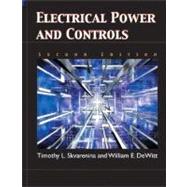
| Fundamentals of Energy and the Power System | |
| Single- and Three-Phase Power | |
| Power Quality Considerations | |
| Magnetic Materials and Circuits | |
| Transformers | |
| Introduction to Motors and Generators | |
| Three-Phase Induction Motors | |
| Single-Phase Motors | |
| Power Electronics | |
| The Synchronous Machine | |
| DC Machines | |
| Control Devices and Circuits | |
| Building Electrical Systems | |
| Programmable Logic Controllers (PLCs) | |
| NEC Tables | |
| List of Symbols | |
| Index | |
| Table of Contents provided by Publisher. All Rights Reserved. |
The New copy of this book will include any supplemental materials advertised. Please check the title of the book to determine if it should include any access cards, study guides, lab manuals, CDs, etc.
The Used, Rental and eBook copies of this book are not guaranteed to include any supplemental materials. Typically, only the book itself is included. This is true even if the title states it includes any access cards, study guides, lab manuals, CDs, etc.